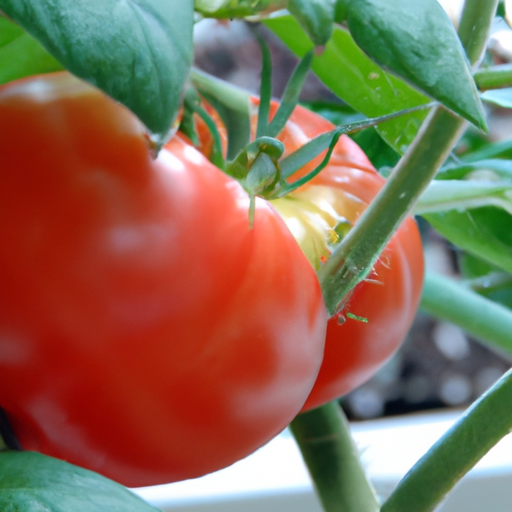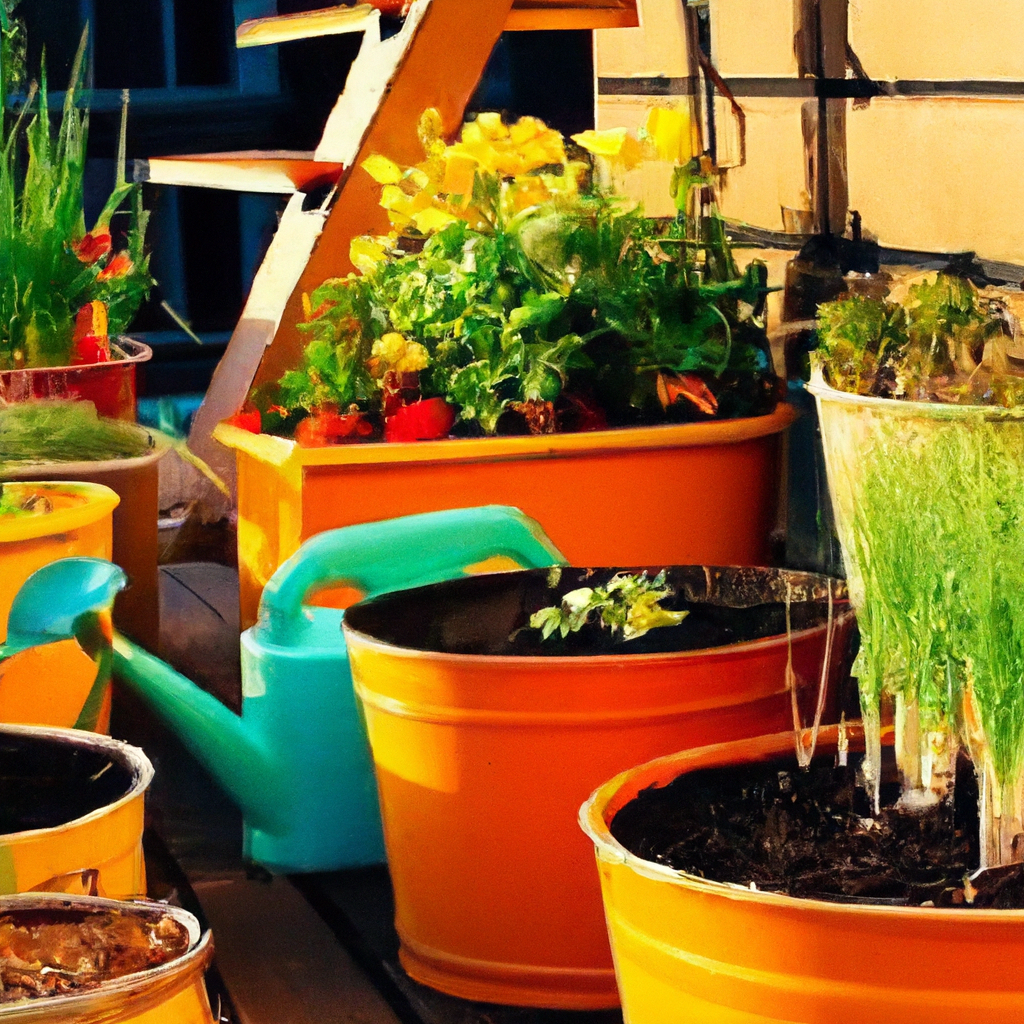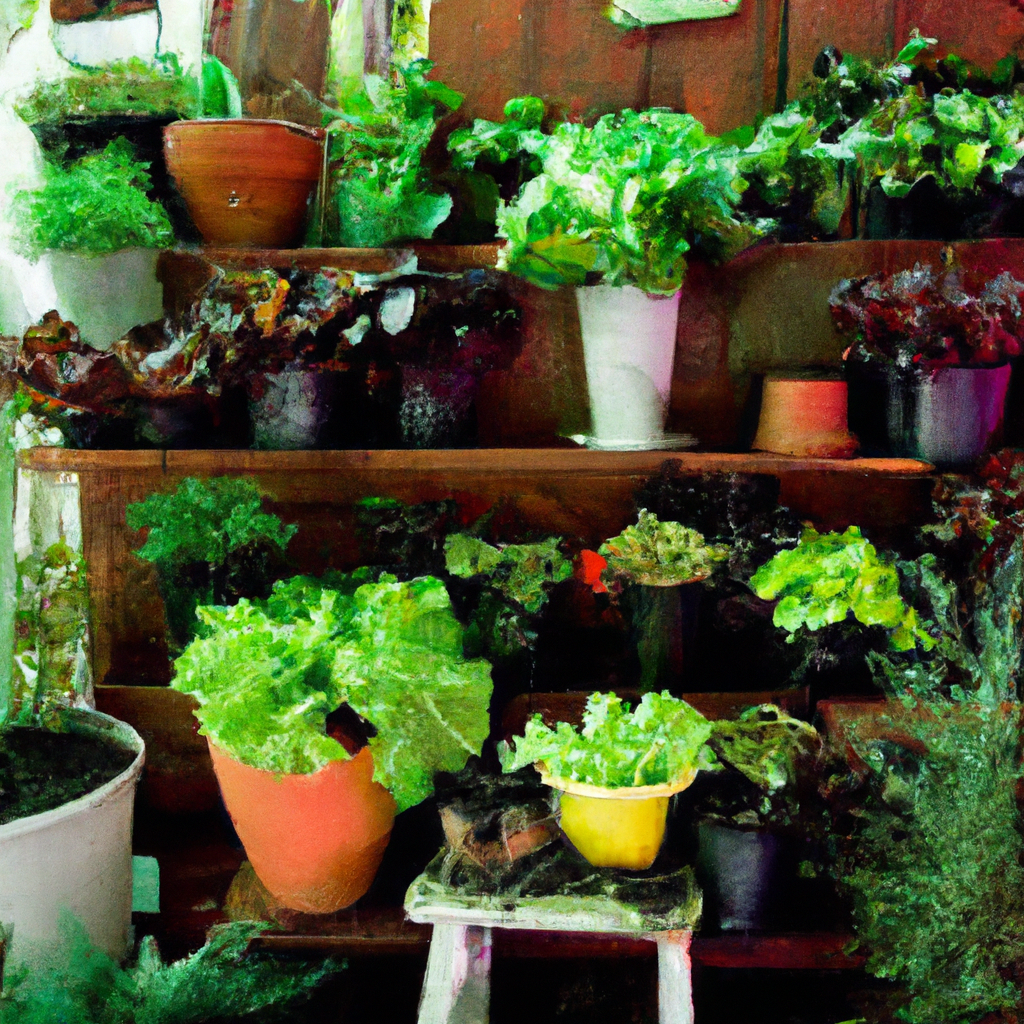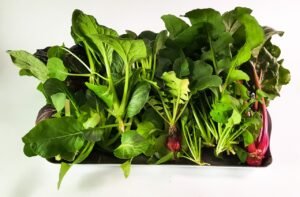
Have you ever wondered how cities across the world are incorporating agriculture into their bustling urban landscapes? In this article, we will take a look at the innovative techniques being used to bring farming to the city. From rooftop gardens to hydroponics systems, urban farmers are finding creative ways to grow fresh produce and reconnect with nature in the concrete jungle. So, whether you’re a city dweller looking to get involved or simply curious about this modern farming phenomenon, join us as we explore the fascinating world of urban farming techniques. Get ready to be inspired by the power of green within the city limits!

1. Vertical Farming
Vertical farming is a innovative and sustainable approach to urban agriculture that involves growing plants in vertical stacks or layers, often indoors or in enclosed environments. This technique maximizes limited space in urban areas, allowing for the cultivation of a wide variety of crops. Vertical farming offers several methods, including hydroponics, aeroponics, and aquaponics, each with its own unique advantages and considerations.
Hydroponics
Hydroponics is a popular method of vertical farming that involves growing plants using nutrient-rich water, without the need for soil. The plants are suspended in a solution containing all the necessary nutrients, allowing them to thrive in a controlled environment. Hydroponics offers numerous benefits, such as increased plant growth, reduced water usage, and the ability to grow crops year-round. Additionally, hydroponic systems can be easily customized to suit various plant species and environmental conditions.
Aeroponics
Aeroponics is another vertical farming technique that involves growing plants in a misted environment, without the use of soil or water. The plant’s roots are suspended in air, while a nutrient-rich mist is sprayed onto them at regular intervals. This method promotes rapid plant growth and efficient nutrient absorption, resulting in a higher crop yield. Aeroponics also conserves water, reduces the risk of pests and diseases, and allows for easy monitoring and maintenance of the plants.
Aquaponics
Aquaponics is a unique combination of aquaculture, the cultivation of fish, and hydroponics. In this system, the waste produced by the fish provides nutrients for the plants, while the plants naturally filter the water for the fish. It is a symbiotic relationship where both the fish and plants benefit from each other’s presence. Aquaponics is a sustainable and efficient method of urban farming, as it minimizes waste, conserves water, and can produce both fish and vegetables simultaneously.
2. Rooftop Farming
Rooftop farming is a growing trend in urban agriculture that utilizes the available rooftop spaces in buildings for farming purposes. This technique not only maximizes the use of unused space but also provides numerous benefits to the environment and the community.
Benefits of Rooftop Farming
One of the major benefits of rooftop farming is its positive impact on the urban environment. Green rooftops help to reduce the urban heat island effect by absorbing and dissipating heat, thus lowering the overall temperature of the building and the surrounding area. Rooftop farms also improve air quality by capturing and filtering pollutants, as well as reducing stormwater runoff by absorbing rainwater.
Rooftop farming also contributes to the local community by providing fresh, locally grown produce. It promotes food security and self-sufficiency, as well as creates opportunities for local residents to engage in agricultural activities and education. Additionally, rooftop farms can serve as social spaces, bringing people together and fostering a sense of community.
Suitable Crops for Rooftop Farming
When it comes to rooftop farming, it is important to consider the suitability of different crops for this type of environment. Some crops thrive in rooftop conditions due to their ability to withstand high temperatures, strong winds, and limited space. These include leafy greens, herbs, microgreens, and certain varieties of fruits and vegetables. The choice of crops should also take into account the available sunlight, as rooftop gardens may be shaded by surrounding buildings or structures.

3. Community Gardens
Community gardens are collaborative spaces where individuals, families, or groups come together to cultivate and maintain shared gardening spaces. These gardens serve multiple purposes and provide numerous benefits to the individuals involved and the surrounding community.
Benefits of Community Gardens
One of the key benefits of community gardens is the promotion of social interaction and community bonding. These spaces provide opportunities for people of diverse backgrounds to come together, share knowledge, and work towards a common goal. The act of gardening together fosters a sense of belonging, strengthens social ties, and improves overall mental well-being.
Community gardens also play a vital role in promoting food security and food access in urban areas. They provide an opportunity for individuals and families to grow their own fresh produce, reducing reliance on expensive store-bought fruits and vegetables. Additionally, community gardens can serve as educational spaces, teaching gardening skills, promoting sustainable agriculture practices, and raising awareness about environmental issues.
Organizing and Managing a Community Garden
Organizing and managing a community garden involves several key steps. First, it is important to ensure proper land access and ownership permissions. This may involve collaboration with local government agencies, private landowners, or community organizations.
Next, it is crucial to establish clear guidelines and rules for gardeners regarding plot allocation, maintenance responsibilities, watering schedules, and the use of pesticides or fertilizers. Regular communication and meetings with garden members can help facilitate collaboration and address any issues or concerns.
Creating a sense of community ownership and involvement is essential in maintaining a successful community garden. Organizing events, workshops, and celebrations can further strengthen the bonds between gardeners and foster a spirit of cooperation and camaraderie.
4. Window Farming
Window farming is an innovative technique that allows individuals to grow plants vertically using natural light and limited space. It is particularly suitable for urban environments where access to larger outdoor spaces may be limited.
Materials Required for Window Farming
To set up a window farm, you will need a few essential materials. These include:
-
Hanging or vertical planters: These are containers designed specifically for vertical gardening. They usually have multiple pockets to hold the plants and allow for easy watering and drainage.
-
Lightweight growing medium: A suitable growing medium, such as a soilless mix or coconut coir, should be used to provide the plants with the necessary support and nutrients.
-
A reliable water source: Window farms require a consistent supply of water. Depending on the setup, you may need to manually water the plants or set up an irrigation system.
-
Plant nutrients: To ensure healthy plant growth, it is important to provide the plants with appropriate nutrients. This can be achieved using either liquid or granular fertilizers specifically formulated for hydroponic or soilless cultivation.
Choosing Plants for Window Farming
While window farming allows for the cultivation of a wide variety of plants, it is important to choose crops that are suitable for the available light conditions and space limitations. Leafy greens, herbs, and small vegetables are ideal choices for window farming, as they do not require much space or intense sunlight.
It is also important to consider the growth habits of the plants and how they will interact with each other. Avoid planting species that may overshadow or outcompete others. Instead, choose plants that have similar light and nutrient requirements to ensure a harmonious and productive window garden.

5. Greenhouse Farming
Greenhouse farming is a method of urban agriculture that involves the use of controlled environments to grow plants. Greenhouses are structures with transparent walls and roofs that allow for the passage of sunlight while providing protection from external factors such as extreme temperatures, pests, and diseases.
Types of Greenhouses
There are several types of greenhouses available, each with its own advantages and considerations. Some common types of greenhouses include:
-
Traditional or glass greenhouses: These are traditional structures made of glass or transparent plastic materials. They provide excellent light transmission and create a stable environment for plant growth. However, they can be expensive to construct and require regular maintenance.
-
Polyethylene or plastic film greenhouses: These greenhouses use a plastic film covering instead of glass. They are cost-effective, easy to assemble, and provide good insulation. However, they may not have the same durability or light transmission as glass greenhouses.
-
Hoop houses or low tunnels: These structures consist of a series of metal hoops covered with plastic film. They are relatively simple to construct and are suitable for smaller-scale farming. Hoop houses provide protection and extend the growing season but may not offer the same level of control as traditional greenhouses.
Controlling Temperature and Humidity in Greenhouses
One of the key advantages of greenhouse farming is the ability to control temperature and humidity levels. It is important to maintain optimal conditions for plant growth, as different crops have varying requirements.
Temperature control can be achieved through proper ventilation, shading, heating, and cooling systems. Ventilation is essential for regulating air circulation and preventing excessive heat buildup. Shading systems, such as shade cloths or screens, can help reduce the intensity of sunlight and prevent heat stress in plants. Heating and cooling systems, such as fans, heaters, and evaporative coolers, can be used to maintain the desired temperature range.
Humidity control is also important to prevent the development of fungal diseases and maintain plant health. This can be achieved through proper watering practices, misting systems, and the use of dehumidifiers or humidifiers.
6. Container Gardening
Container gardening is a versatile and accessible form of urban gardening that allows individuals to grow plants in containers, such as pots, boxes, or hanging baskets. This method is particularly suitable for those with limited outdoor space or no access to land for traditional gardening.
Selecting Containers for Urban Gardening
When selecting containers for urban gardening, it is important to consider several factors. The size of the container should be appropriate for the chosen plants, providing enough space for root growth. Ensure that the containers have drainage holes to prevent waterlogging and root rot.
The material of the container is also important. Plastic containers are lightweight, inexpensive, and easy to move but may deteriorate over time. Terracotta or ceramic pots are aesthetically pleasing but tend to be heavier and can be prone to cracking. Self-watering containers or grow bags are also popular options, as they provide a built-in water reservoir and promote healthier root development.
Best Plants for Container Gardening
Container gardening offers great flexibility in terms of plant choices. Many vegetables, herbs, flowers, and even small fruit trees can be successfully grown in containers. Some popular choices for container gardening include tomatoes, peppers, lettuce, herbs like basil and mint, and flowers such as marigolds and petunias.
When selecting plants for container gardening, it is important to consider their sunlight, water, and nutrient requirements. Choose plants that are suitable for the available space and light conditions, and ensure that they receive adequate watering and nutrients.

7. Permaculture
Permaculture is a holistic approach to urban farming that aims to create sustainable and self-sufficient systems inspired by natural ecosystems. It involves designing and managing urban spaces in a way that mimics the patterns and processes observed in nature.
Designing an Urban Permaculture System
Designing an urban permaculture system involves careful observation of the site and an understanding of the key principles of permaculture. The system should integrate multiple functions and elements, such as food production, water conservation, waste management, and wildlife habitat creation.
Key design elements include:
-
Forest gardening: This involves planting a diverse mix of trees, shrubs, and perennial plants to create a self-sustaining ecosystem that mimics a natural forest. Each plant has a specific role, such as providing food, shade, or nutrients.
-
Water management: Permaculture emphasizes the conservation and efficient use of water resources. Techniques such as rainwater harvesting, graywater recycling, and the use of swales or contour trenches can be employed to capture and store water for irrigation.
-
Composting and recycling: Permaculture systems prioritize the recycling of organic waste to create nutrient-rich compost. This can be achieved through the use of compost bins, worm farms, or biodigesters.
-
Wildlife integration: Encouraging biodiversity and creating habitats for beneficial insects, birds, and other wildlife is an important aspect of permaculture. This can be achieved through the incorporation of native plants, wildlife-friendly features, and reducing the use of chemical pesticides.
Managing Waste and Water in Permaculture
Permaculture systems place a strong emphasis on waste reduction and resource conservation. By implementing techniques such as composting, recycling, and rainwater harvesting, permaculture gardens can minimize waste and dependence on external resources.
Composting is a fundamental practice in permaculture, as it allows for the recycling of organic waste into nutrient-rich soil amendments. Compost bins or worm farms can be used to process kitchen scraps, garden trimmings, and other organic materials. The resulting compost can then be used to fertilize the garden, closing the nutrient cycle.
Water management is another important aspect of permaculture. Rainwater harvesting systems, such as rain barrels or larger storage tanks, can collect and store rainwater for later use in irrigation. Graywater recycling systems can also be implemented to reuse water from sinks, showers, or washing machines for outdoor irrigation.
By effectively managing waste and water, permaculture systems help create a more sustainable and regenerative urban environment.
8. Intensive Gardening
Intensive gardening is a method of urban agriculture that maximizes the productivity of limited space by closely planting crops and utilizing vertical growing techniques. This approach allows for the efficient use of resources and the optimization of crop yield.
Companion Planting in Urban Gardens
Companion planting is a technique used in intensive gardening that involves planting compatible crops together to promote mutual growth and pest control. Certain plant combinations can enhance each other’s nutrient uptake, repel pests, and attract beneficial insects.
For example, planting basil alongside tomatoes can improve the flavor of the tomatoes and repel pests like aphids and tomato hornworms. Marigolds are often used as companion plants because they deter a wide range of pests with their strongly scented flowers. Additionally, planting flowers that attract pollinators, such as lavender or sunflowers, near fruiting crops can improve pollination and fruit set.
By strategically selecting companion plants, intensive gardens can benefit from enhanced plant health, reduced pest pressure, and increased overall productivity.
Maximizing Space in Intensive Gardens
Space optimization is crucial in intensive gardening, as every square inch counts. To maximize space, several techniques can be employed:
-
Vertical gardening: Utilizing vertical space is an effective way to grow more plants in a limited area. Techniques such as trellising, hanging baskets, and plant stacking can be used to maximize vertical growth.
-
Succession planting: By planting crops in succession, as soon as one crop is harvested, another is immediately planted. This ensures a continuous supply of fresh produce throughout the growing season and maximizes the use of available space.
-
Intercropping: Intercropping involves planting fast-growing and slow-growing crops together in the same space, taking advantage of the different growth rates. For example, lettuce or radishes can be planted between rows of slower-growing crops like tomatoes or peppers.
-
Square foot gardening: This technique involves dividing garden beds into square-foot sections and planting specific crops or combinations of crops within each square. This helps to optimize planting density and facilitates better space utilization.
By implementing these techniques, intensive gardens can produce a high yield of diverse crops in a small area, making it an efficient and productive form of urban agriculture.

9. Hydroponics
Hydroponics is a soilless growing technique that utilizes nutrient-rich water to cultivate plants. This method is gaining popularity in urban farming due to its numerous advantages, including water conservation, increased plant growth, and the ability to grow crops year-round.
Benefits of Hydroponics
Hydroponics offers several benefits for urban farming:
-
Efficient water usage: Hydroponic systems use up to 90% less water compared to traditional soil-based farming. The water in the system is recirculated, minimizing wastage and conserving this valuable resource.
-
Increased plant growth: Hydroponic plants tend to grow faster and produce higher yields compared to traditional soil-based crops. This is because the plants have constant access to water and nutrients, leading to optimal growth conditions.
-
Year-round crop production: Hydroponic systems can be set up indoors, allowing for year-round crop production regardless of the external climate. This provides a consistent and reliable food source in urban areas.
-
Controlled environment: Hydroponics allows for the precise control of environmental factors such as temperature, humidity, and light intensity. This enables growers to create optimal conditions for plant growth and maximize efficiency.
Setting up a Hydroponic System
Setting up a hydroponic system requires several key components:
-
Reservoir: This is a container that holds the nutrient-rich water solution. It should be large enough to accommodate the number of plants being grown.
-
Growing medium: Unlike soil-based farming, hydroponics requires a growing medium to provide support for the plants. Common choices include rockwool, perlite, coconut coir, or hydroton clay pebbles.
-
Nutrient solution: A balanced nutrient solution is essential for the plant’s growth and development. Commercially available hydroponic nutrients can be mixed with water to provide the necessary elements.
-
Delivery system: The nutrient-rich water needs to be delivered to the plant’s roots. This can be achieved through various methods such as drip irrigation, flood and drain systems, or nutrient film technique.
-
Lighting: Hydroponic systems often require artificial lighting, especially when grown indoors. LED grow lights are a popular choice due to their energy efficiency and adjustable light spectrum.
By carefully setting up and maintaining a hydroponic system, urban farmers can enjoy the benefits of year-round, high-yield crop production with minimal environmental impact.
10. Aquaponics
Aquaponics is a unique and sustainable approach to urban farming that combines aquaculture (fish farming) with hydroponics. It is a closed-loop system that creates a mutually beneficial relationship between fish and plants, resulting in a self-sufficient and highly productive ecosystem.
The Fish-Plant Connection
In an aquaponic system, fish excrete waste in the form of ammonia. This waste is toxic to fish, but beneficial bacteria convert it into nitrites and then nitrates, which are essential nutrients for plants. The nutrient-rich water is then pumped to the hydroponic beds where plants take up these nutrients, effectively filtering the water for the fish.
The plants act as a natural filter, removing harmful compounds from the water and creating a clean, oxygenated environment for the fish. This symbiotic relationship between the fish and plants enables both to thrive and reduces the need for external inputs such as fertilizers or pesticides.
Setting up an Aquaponic System
Setting up an aquaponic system involves several key components:
-
Fish tank: This is the primary component of the system, where the fish are housed. The tank should be properly sized and equipped with a filtration system to maintain water quality.
-
Grow beds: These are the hydroponic beds where the plants are grown. They can be filled with a suitable growing medium such as gravel, clay pebbles, or expanded clay.
-
Water circulation: A pump is used to circulate the nutrient-rich water from the fish tank to the hydroponic beds and back. The water should be oxygenated to ensure the well-being of the fish and proper nutrient uptake by the plants.
-
Fish species and plant selection: It is essential to choose fish species that are well-suited to the aquaponic environment and the local climate. Common choices include tilapia, catfish, or trout. When selecting plants, choose those with similar nutrient requirements and that can tolerate the relatively high nutrient levels in the water.
-
Monitoring and maintenance: Regular monitoring of water quality parameters, such as pH, ammonia, nitrites, and nitrates, is crucial to ensure the health of the fish and plants. The system may also require periodic maintenance, such as removing excess plant material or adjusting nutrient levels.
Aquaponics provides a sustainable and efficient method of urban farming that minimizes waste, conserves water, and allows for the simultaneous production of fish and vegetables. By harnessing the power of nature, aquaponics offers a unique opportunity to create a healthy and self-sufficient food system in urban areas.
In conclusion, urban farming techniques offer diverse ways to cultivate food and create sustainable systems in urban environments. Whether it is through vertical farming, rooftop farming, community gardens, window farming, greenhouse farming, container gardening, permaculture, intensive gardening, hydroponics, or aquaponics, there are countless opportunities for individuals and communities to engage in urban agriculture. Each technique has its own benefits and considerations, allowing individuals to tailor their urban farming approach to their needs and available resources. By embracing these techniques, we can transform our cities into greener, more self-sufficient, and vibrant spaces that contribute to food security, environmental sustainability, and community well-being.







